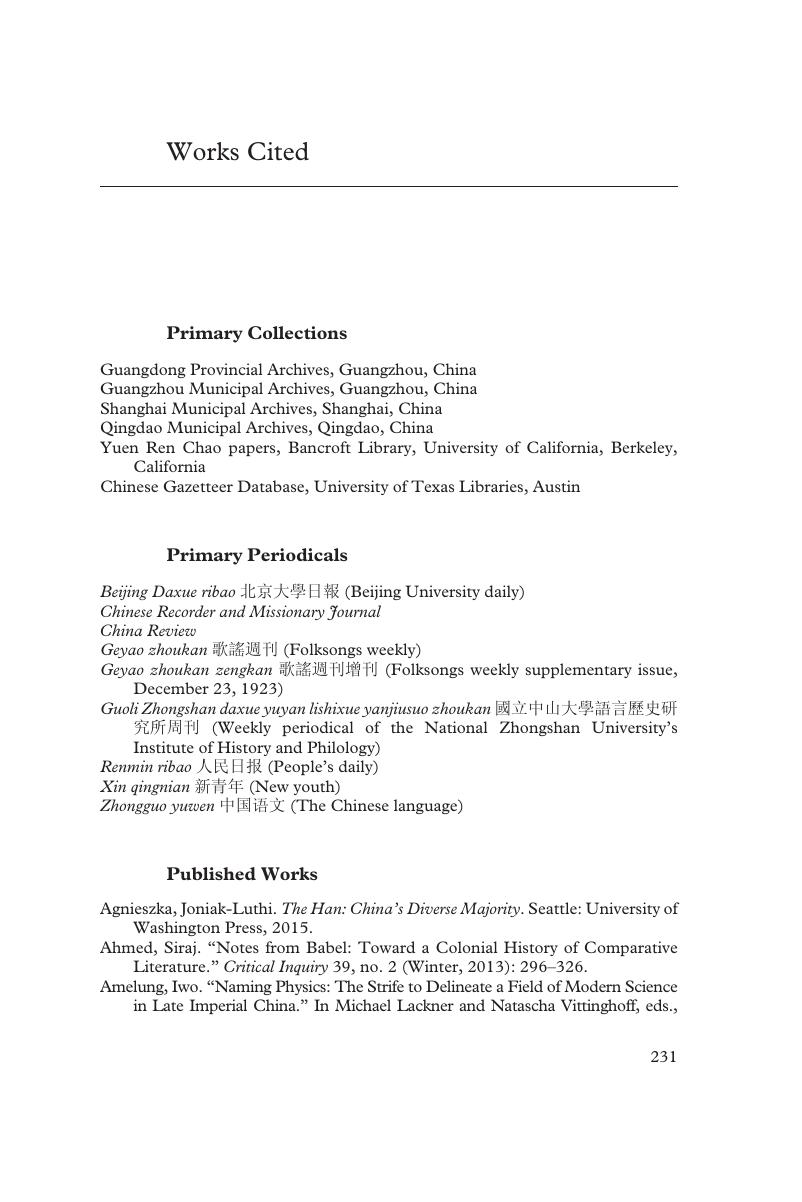Book contents
- Dialect and Nationalism in China, 1860–1960
- Dialect and Nationalism in China, 1860–1960
- Copyright page
- Dedication
- Contents
- Figures
- Acknowledgments
- A Note on Romanization and Characters
- Introduction
- 1 A Chinese Language
- 2 Unchangeable Roots
- 3 The Science of Language in Republican China
- 4 The People’s Language
- 5 The Mandarin Revolution
- Epilogue
- Works Cited
- Index
- References
Works Cited
Published online by Cambridge University Press: 28 February 2020
- Dialect and Nationalism in China, 1860–1960
- Dialect and Nationalism in China, 1860–1960
- Copyright page
- Dedication
- Contents
- Figures
- Acknowledgments
- A Note on Romanization and Characters
- Introduction
- 1 A Chinese Language
- 2 Unchangeable Roots
- 3 The Science of Language in Republican China
- 4 The People’s Language
- 5 The Mandarin Revolution
- Epilogue
- Works Cited
- Index
- References
Summary

- Type
- Chapter
- Information
- Dialect and Nationalism in China, 1860–1960 , pp. 231 - 255Publisher: Cambridge University PressPrint publication year: 2020



